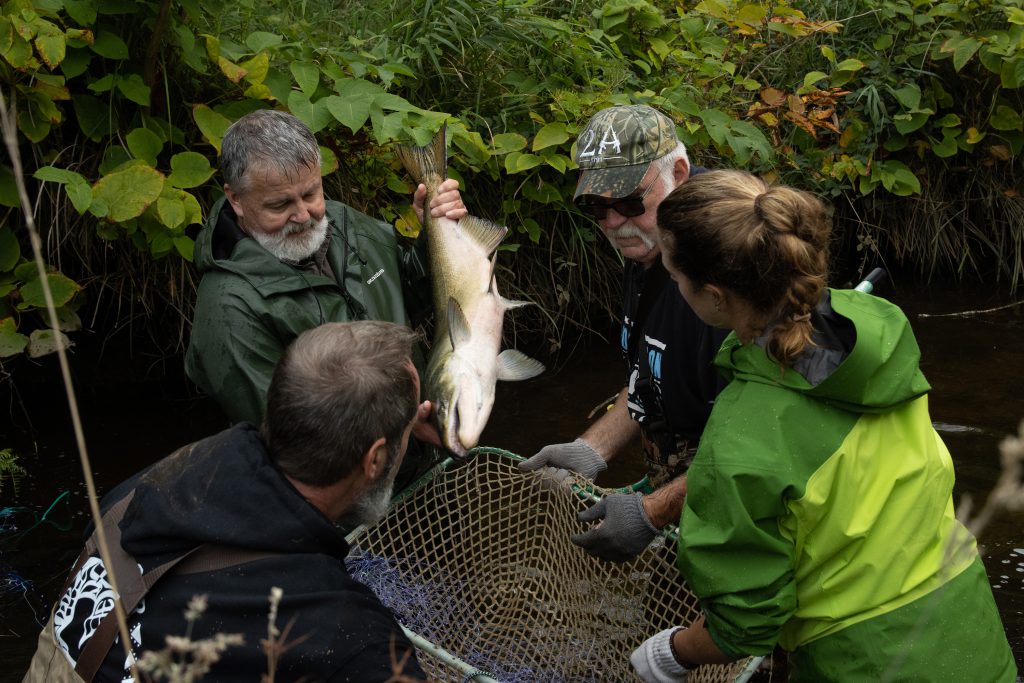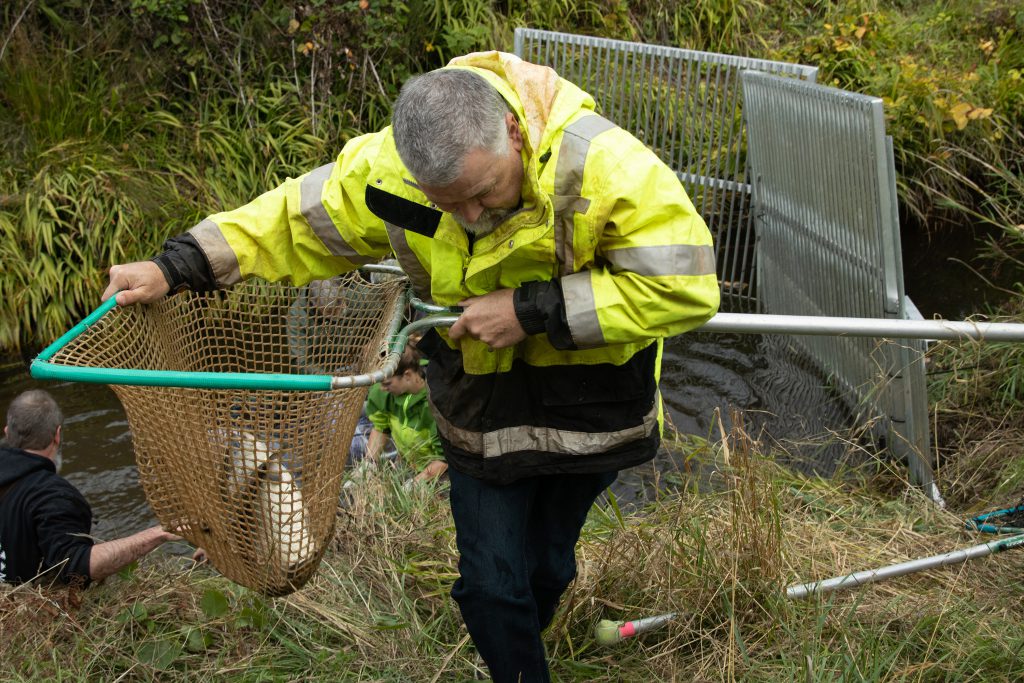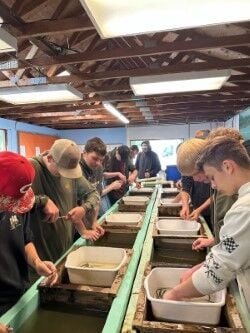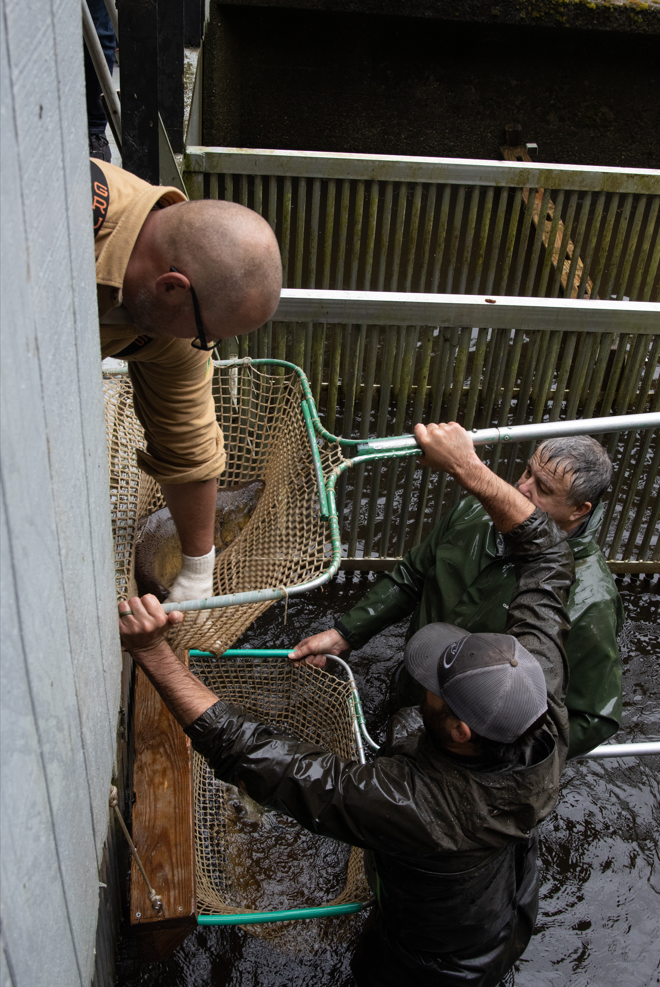- The Coquille Indian Tribe will restore fish passage at four culvert and tide gate barriers in the Coquille River watershed. This will open significant habitat for threatened Oregon Coast coho, Coquille River fall Chinook, and Pacific lamprey—species that are culturally important to the Coquille Indian Tribe and the community of Coos Bay. The work will help reduce the impacts of climate change by providing functioning floodplains and upgrading a major road and tsunami evacuation route. ($4.2 million)
Category: Salmon
Coquille River small mouth bass derby extended
Dept of Transportation funds to help salmon
The Coquille Indian Tribe are among the agencies that will receive more than $19 million to get rid of barriers that have made it difficult for threatened fish to journey from freshwater rivers and streams to the ocean and back.
Salmon smolt 2023
Salmon smolt released into Coquille waterways
Thousands of young salmon have been released into the waterways of the Coquille River thanks to the help of a group of students at Coquille Junior/Senior High School.
Breaking the law to uphold it
One man’s 2011 clam digging citation became a watershed event for the Coquille Indian Tribe. It was one of many battles that the Pacific Northwest’s Indigenous peoples have fought to preserve access to traditional foods.
In a seven-part project, Indian Country Today explores the issues surrounding “food sovereignty.”
Chinook salmon in peril
Endangered species listing would have pros and cons
The Coquille Indian Tribe continues is working to protect and restore Chinook salmon, but it hasn’t taken a stance on the possibility of an endangered listing.
2022 fall Chinook salmon run
Salmon news, October 2022

David Welch, manager of the Bandon Hatchery, lifts an adult salmon from the waters of Ferry Creek, with help from Coquille Tribal employees and a STEP volunteer. The fish was transferred to a truck-mounted tank for transport to the hatchery.
2022’s fall Chinook run looks stronger
Oct. 14, 2022
BANDON, Ore. – Chinook salmon numbers are stronger on the Coquille River this fall, thanks to improved ocean conditions and cooperative work by multiple agencies and local volunteers.
“The Pacific Ocean is bringing our fish back this year, and we’re all so happy and thankful for that,” said John Ogan, head of the Coquille Indian Tribe’s Natural Resources Office.
This year the tribe negotiated a cooperative management agreement with the Oregon Department of Fish and Wildlife, and the two agencies are jointly leading efforts to capture adult salmon as they return to Bandon’s Ferry Creek. As of mid-October, they had netted 36 adult females and 39 adult males.
Those fish will become brood stock at the Bandon Hatchery. The number already exceeds the 24 breeding pairs collected on Ferry Creek last fall, and the season has barely begun. Many salmon are believed to be waiting for heavier flows before starting their upstream trek.
“We all believe that the first rain we get, that’s going to be fun,” Ogan said. “They’ll get that freshet smell, and it’s game on.”
In addition to the ocean’s improved productivity, humans have taken steps to help salmon feel welcome at Ferry Creek. With financial help from the Port of Bandon, volunteers have installed a V-shaped fence that funnels fish through a narrow passage and blocks their return. Other improvements include a new fish trap and “jump pools” that function like a fish ladder to lead fish upstream.

Mark Johnston, executive director of the Coquille Indian Tribe, pitches in to carry a salmon to a waiting tank truck.
Ogan praised the work of community volunteers from the Coquille Salmon and Trout Enhancement Program.
“A special tip of the hat to the STEP group,” he said. “They had the boots on the ground and the chest waders in the stream, and they did a lot of work.”
Ogan hopes the partner agencies will collect at least 50 to 60 breeding pairs for spawning at the Bandon Hatchery. The goal is to release at least 155,000 baby salmon, known as smolts, into the Coquille River system – and if even more if a bountiful brood allows.
This is the Coquille Tribe’s second year of partnering with ODFW and the local community to restore fall Chinook. Last year the tribe declared an emergency after learning that Chinook numbers had plummeted.
Producing salmon eggs for hatchery production is just one phase of the project. This summer the Oregon Fish and Wildlife Commission approved a “conservation hatchery” program on the Coquille River.
Fall Chinook salmon news
ODFW pact
Coquille finally get hunting rights
Coquille Indian Tribe members have their first subsistence hunting opportunities in five southwest Oregon counties under a new state agreement.


